Banjo love songs are a unique blend of emotions conveyed through the crisp, resonant strings of a banjo. As a blend of folk, country, and bluegrass, these songs have a way of telling stories of love, heartbreak, and everything in between. They provide a refreshing take on the traditional love song theme, weaving together the rustic charm of banjo music with the universal language of love.
“When You Say Nothing at All” – Alison Krauss & Union Station
“When You Say Nothing at All,” performed by Alison Krauss & Union Station, is a stellar example of a banjo love song. This song’s sweet and simple message – that sometimes actions speak louder than words – is beautifully underscored by the gentle strumming of the banjo. It adds a layer of intimacy and warmth to the song, making the listener feel like they’re partaking in a private serenade. The banjo, in this case, serves as an extension of the song’s core sentiment, adding depth and authenticity to the narrative. The song is a testament to the power of the banjo in expressing tender, heartfelt emotions in music.[1]
“Your Long Journey” – Robert Plant and Alison Krauss
“Your Long Journey,” a poignant duet by Robert Plant and Alison Krauss, exemplifies the soul-stirring power of the banjo in conveying tales of love and loss. The song, originally composed by Doc Watson, narrates the emotive journey of a person bidding their final goodbye to their lifelong partner, with the message profoundly accentuated by the poignant strumming of the banjo. The rustic notes of the banjo intertwine seamlessly with the lyrics, creating an ambiance of nostalgia and reverie. The unique timbre of the banjo amplifies the song’s melancholic undertone, translating the tangible sense of longing and love into a musical tapestry. It is a stirring testament to the versatility of the banjo and its capacity to capture the varied nuances and complexities of love in its most raw and unfiltered form.[1]
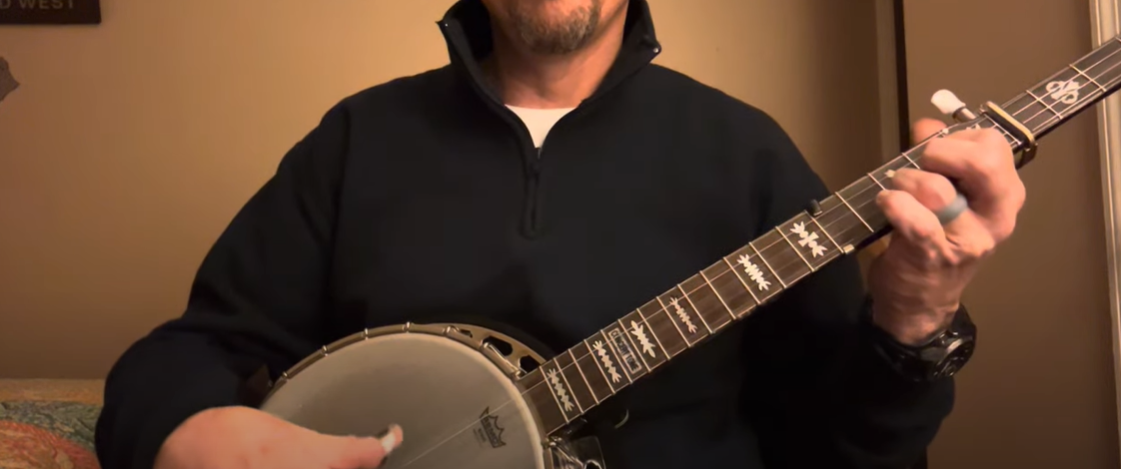
“Banjo” – Rascal Flatts
“Banjo”, a lively and upbeat number by Rascal Flatts, truly captures the spirit and energy of banjo love songs. This song takes listeners on a journey to the countryside, painting a vivid picture of love and freedom. The banjo takes center stage in the song, its cadence injecting a dose of excitement and optimism into the narrative. The song tells a tale of breaking free from the hustle and bustle of urban life and finding solace in the simplicity and beauty of the countryside, with love as the driving force. The enthusiasm and joy in the song are infectious, the banjo’s rhythm creating an irresistible urge to tap your feet. The rollicking sound of the banjo in this song not only enhances the narrative but also underscores the song’s central theme of love and liberation. “Banjo” is truly a testament to the instrument’s ability to evoke a plethora of emotions and its integral role in shaping the narrative of love songs.[1]
“Annabelle Lee” – Sarah Jarosz
“Annabelle Lee”, a hauntingly beautiful song performed by Sarah Jarosz, is a sterling example of a banjo love song with a twist. Inspired by Edgar Allan Poe’s last complete poem of the same name, the song tells a tragic tale of love lost too soon. The mournful strumming of the banjo creates an eerie yet mesmerizing atmosphere, invoking images of a love that continues to persist beyond the grave. The song, much like the poem, explores the theme of love that is so profound it defies even death. The ethereal sound of the banjo adds a layer of melancholy and mystery to the song, enhancing the depth of the narrative. It’s a testament to the versatility of the banjo in expressing a wide spectrum of emotions and its unparalleled ability to tell a love story that transcends the boundaries of life and death.[2]
“Marry Me” – Train (features banjo in a pop context)
“Marry Me”, a heartwarming ballad by pop-rock band Train, features the banjo in a unique context, diverging from its traditional association with country and bluegrass genres. The song is a heartfelt proposal of marriage, filled with romantic overtures and vulnerability. The banjo, though not the dominant instrument, subtly accentuates the song’s emotional narrative, imbuing it with a unique tenderness and candor. Its quiet strumming serves as an unobtrusive yet evocative backdrop against the sincere, emotive lyrics. The song is an excellent demonstration of how the banjo’s rustic charm can be seamlessly integrated into a contemporary pop song. It illustrates the instrument’s versatility and ability to add depth and texture to a love song, even in a non-traditional context. This delicate balance between pop melody and the banjo’s rustic strumming results in a song that tugs at the heartstrings, leaving a lasting impression.[2]
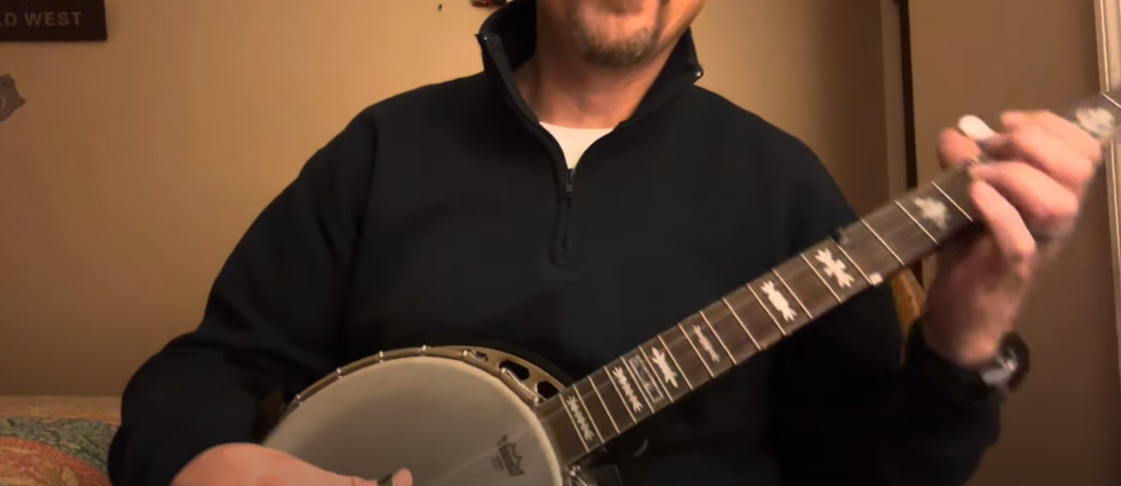
“Lovesick Blues” – The Lonesome River Band
“Lovesick Blues” performed by The Lonesome River Band is a classic banjo love song that has stood the test of time. A song filled with unrequited love and longing, it showcases the banjo’s unique ability to convey deep-seated emotions in an evocative and impactful manner. The vibrant strumming of the banjo, combined with the song’s heartfelt lyrics, paints a vivid picture of a lovesick individual yearning for their beloved. The pulsating rhythm of the banjo underlines the emotional intensity of the song, emphasizing the protagonist’s sense of loss and desperation. The song is a perfect example of how the rustic charm and musical versatility of the banjo can breathe life into a narrative, creating an emotional soundscape that resonates with listeners. It’s a compelling testament to the banjo’s inherent power to convey the many shades of love – from joy to heartbreak – in a deeply stirring and authentic manner.[2]
“Gentle On My Mind” – Glen Campbell
“Gentle On My Mind,” a classic performed by Glen Campbell, is another shining example of how the banjo can be utilized to enhance the storytelling in love songs. This Grammy-winning track offers an insightful and touching narrative about love that is not binding, yet remains a constant presence. The banjo, with its distinctive twang and rhythmic licks, serves as a perfect complement to Campbell’s smooth vocals, enriching the song’s narrative with a sense of wanderlust and freedom. The interweaving of the banjo’s rustic charm with the lyrics creates an enchanting musical tapestry that eloquently expresses the free-spirited nature of the love story. It underscores the song’s central theme – that love can be a gentle, abiding, yet non-restrictive force in one’s life. The use of the banjo in “Gentle On My Mind” further cements its status as an instrumental storyteller in the world of love songs, underscoring its ability to echo the contours of the heart in its own unique linguistic musicality.[2]
“My Oh My” – The Punch Brothers
“My Oh My” by The Punch Brothers is a modern banjo love song that powerfully illustrates the banjo’s capacity to express complex emotions within the realm of romance. The song is a melodious narrative of love’s intricate dance, filled with its highs, lows, and inevitable uncertainties. The banjo, played masterfully by Chris Thile, serves as the pulse of the song, its sound lending an intensity and rawness to the lyrics. The fast-paced, intricate banjo picking mirrors the tumultuous journey of love, capturing the twists and turns, the euphoria and the heartaches. The song’s lyrical narrative, combined with the dynamic banjo accompaniment, creates a musical experience that is deeply engaging and emotionally resonant. “My Oh My” showcases the banjo’s ability to both maintain the rhythm and enrich the emotional landscape of a song, further exemplifying its significance in the world of love songs. This song is a testament to the banjo’s versatility and its unique capacity to encapsulate the universal language of love in its strings.

FAQ
What is the most famous banjo tune?
Among the myriad of banjo tunes that have graced our ears over the years, “Dueling Banjos” arguably takes the crown as the most famous of them all. The song was popularized by the 1972 movie “Deliverance,” where it played a central and unforgettable role. Originally composed by Arthur “Guitar Boogie” Smith in 1955, “Dueling Banjos” showcases a compelling musical conversation between a guitar and a banjo, gradually building up to a fast-paced, riveting climax. Despite its cinematic association with a rather unsettling scene, the tune, with its catchy melody and intricate banjo picking, has become synonymous with the sound of the banjo itself. Whether performed as a solo or in concert with other instruments, “Dueling Banjos” remains a monumental testament to the banjo’s captivating appeal, its wide-ranging versatility, and its enduring legacy in the world of music.
What songs use the banjo?
The banjo has been a common feature in many songs, spanning various genres and eras. “Foggy Mountain Breakdown” by Flatt & Scruggs is a classic example, a bluegrass standard that has become synonymous with the banjo. “Cripple Creek,” a traditional song that showcases the banjo’s bright twang and rhythmic capabilities, is another notable mention. In more contemporary contexts, Mumford & Sons’ “Little Lion Man” and “The Cave” have successfully integrated the banjo into the indie folk genre. “Take It Easy” by The Eagles is a classic rock song that prominently features the banjo, demonstrating its versatility across genres. Finally, “Wagon Wheel” by Old Crow Medicine Show is a popular country-folk tune where the banjo provides a distinctive, memorable melody. These songs offer a clear demonstration of how the banjo can add a unique flavor to a wide range of musical styles.
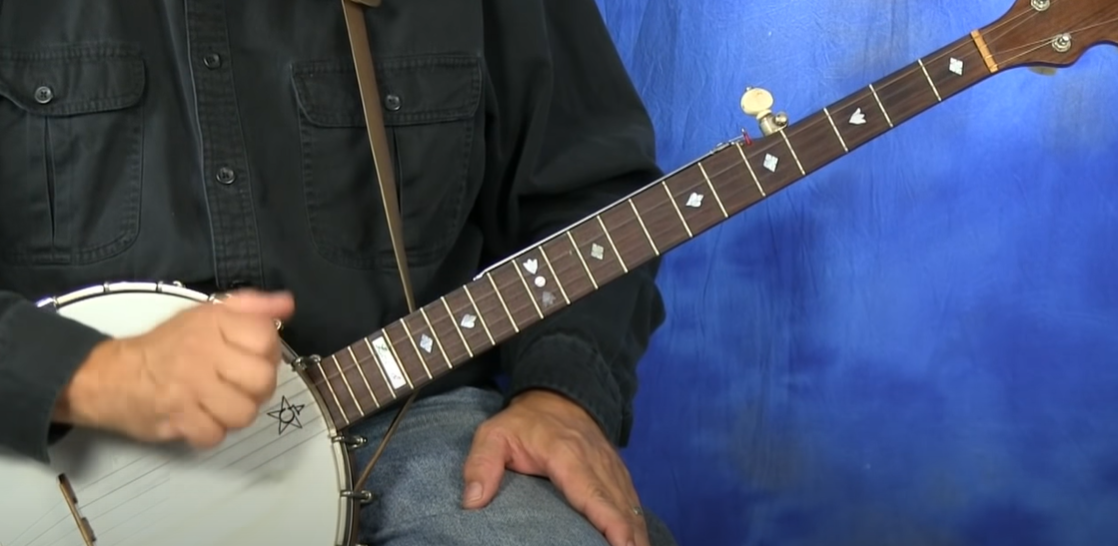
What is music with banjos called?
Music that prominently features the banjo is typically referred to as ‘banjo music’, although this term encompasses a variety of styles and genres. Banjo music is often associated with folk and country music, where the instrument’s distinctive, twangy sound perfectly complements the storytelling and traditional themes of these genres. However, the banjo has also found its place in bluegrass music, a genre originating in the United States that heavily relies on banjo playing. Furthermore, the banjo has seen use in jazz, especially in traditional, or “Dixieland” jazz, where it provides a rhythmic underpinning to the melody. In short, while there isn’t a specific term for music that features banjos, this versatile instrument can be found across a diverse range of musical styles, each of which utilizes the banjo to create its unique sound.
Is banjo music folk or pop?
Banjo music is not confined to a single genre; it is a versatile instrument that can seamlessly blend into various musical styles. Traditionally, the banjo has been deeply rooted in folk and country music, resonating with the narrative-driven and rustic themes of these genres. Folk artists like Pete Seeger and Earl Scruggs have become legends for their masterful banjo playing, showcasing the instrument’s unique twang and melodic versatility.
However, in recent years, the banjo has transcended its folk roots and made its way into pop music as well. Bands like Mumford & Sons and The Lumineers have skillfully incorporated the banjo into their indie-folk-pop blend, adding a distinctive texture and depth to their music. The banjo’s ability to straddle both genres effortlessly has opened up new creative possibilities, creating a fusion of folk and pop that appeals to a wide range of listeners.
By embracing this fusion, banjo music has gained even broader appeal, captivating both traditional folk enthusiasts and fans of contemporary pop music. This instrument’s adaptability and broad range of expression continue to elevate banjo music to new heights, making it a beloved and essential component of various musical genres. Whether it’s the soulful melodies of folk or the catchy hooks of pop, the banjo’s presence adds a unique charm that enhances the overall musical experience.
Is it easy to learn banjo?
The ease of learning the banjo can vary greatly depending on an individual’s musical background, level of dedication, and commitment to practice. As with any instrument, mastering the banjo requires not only time and patience but also consistent effort and a genuine passion for the instrument. However, beginners often find the banjo to be more approachable than some other stringed instruments, thanks to its typically fewer strings and relatively simple basic strumming patterns that can be easier to pick up.
Moreover, the open tuning of a five-string banjo adds to its appeal, as it allows for playing basic chords with relative ease. This feature enables beginners to quickly experience the joy of creating music and building a foundation of skills. However, progressing to more complex techniques, such as fingerpicking, can present a challenge. It requires additional practice, focus, and perseverance to develop the dexterity and coordination needed for advanced banjo playing.
Ultimately, while the learning curve may seem steep at times, with regular practice, enthusiasm, and potentially the guidance of a skilled teacher, one can certainly learn and thoroughly enjoy playing the banjo. It is a rewarding journey that offers not only musical fulfillment but also a deep appreciation for the rich tradition and history associated with this unique instrument.
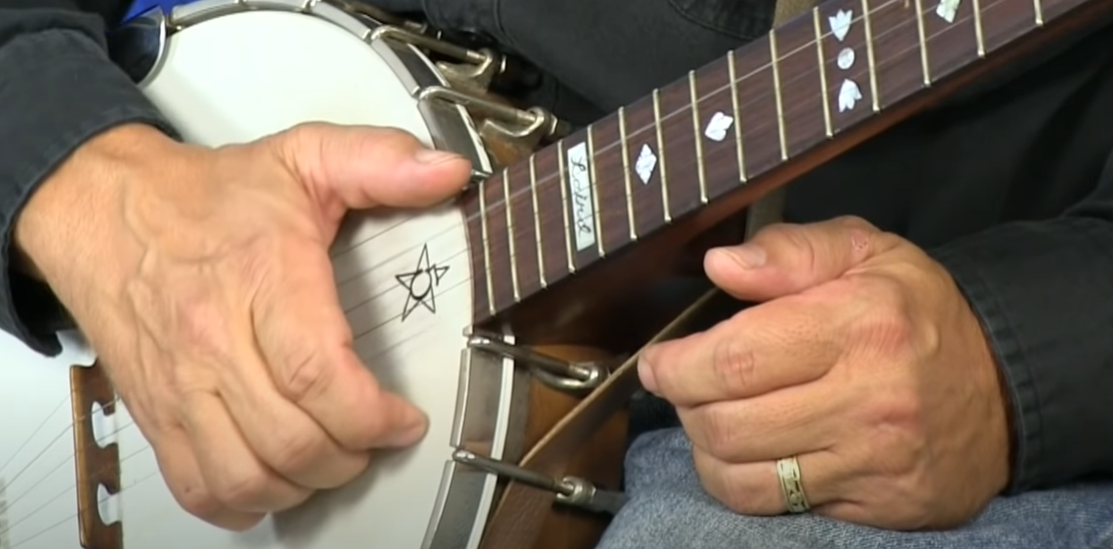
Why do people like the banjo?
The appeal of the banjo lies in its unique sound and history, which resonate with a wide range of music lovers. Its distinctive, bright twang is instantly recognizable and adds a unique texture to any piece of music. This sound, often associated with joy, energy, and rural simplicity, has a certain nostalgic charm that can evoke a sense of connection to one’s roots and to the wider human experience.
The banjo’s history, deeply intertwined with American folk and country music, gives it a cultural significance that many music enthusiasts appreciate. From its roots in African and African-American traditions to its evolution in the Appalachian region, the banjo carries a rich musical heritage that spans centuries.
Furthermore, the banjo’s ability to adapt across various music genres is a testament to its inherent flexibility and versatility. While traditionally associated with folk and country, the banjo has found its place in pop, jazz, and even rock music. Its unique timbre adds a refreshing dimension to these genres, captivating listeners with its unexpected presence.
Beyond its sonic qualities, the banjo presents a technical challenge that attracts musicians who enjoy honing their skills and exploring new musical frontiers. Its distinctive playing style, featuring intricate fingerpicking patterns and rhythmic rolls, requires precision and dexterity. This musical challenge pushes musicians to expand their abilities and discover new possibilities within their craft.
In essence, people are drawn to the banjo for its unique sound, historical significance, versatility, and the rewarding musical challenge it offers. Whether it’s the twangy melodies of old-time Appalachian tunes or the innovative banjo solos in contemporary music, the banjo continues to captivate and inspire musicians and music lovers alike.
Useful Video: Jason Mraz – I’m Yours | Banjo Cover
Conclusion
In conclusion, the banjo is a unique and versatile instrument that has found its place in a wide range of music genres. It has been a staple in folk, country, and bluegrass music, and has also made notable appearances in pop, rock, and jazz. Its distinctive sound has become synonymous with many classic songs and has helped define the musical style of many artists. The banjo’s appeal lies in its vibrant twang, its historical significance, and its potential for musical exploration. Whether you’re a listener who appreciates its unique sound, or a musician seeking to master its techniques, the banjo offers a rich and rewarding musical experience.
References:
- https://www.musicindustryhowto.com/songs-with-banjo/
- https://www.musicalmum.com/songs-with-banjo/




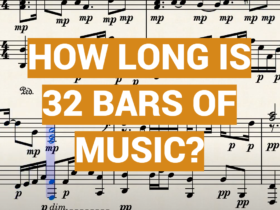



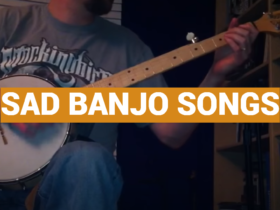
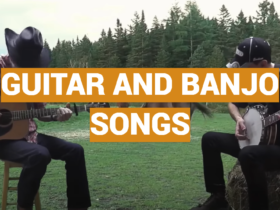
Leave a Reply